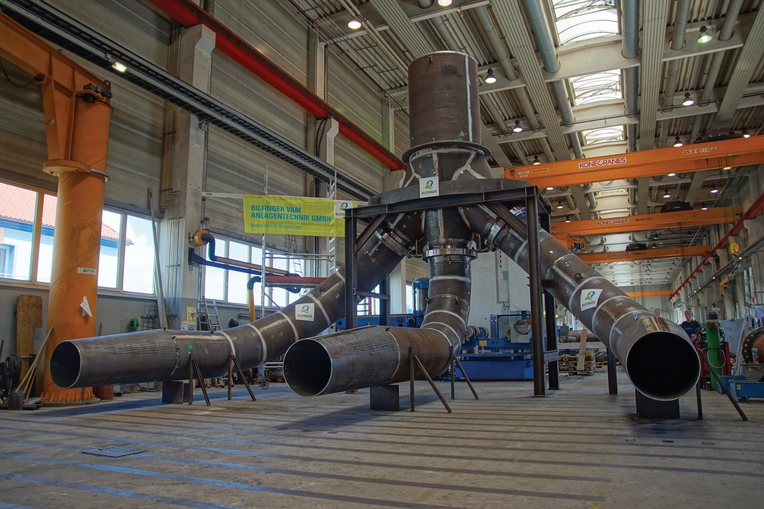Bilfinger delivers distribution pipeline for water battery project
The problem is well-known: With the ongoing expansion of renewable energies, the volatility of natural power generation must also be offset. By storing energy in a so-called water battery – a combination of wind park and a pumped-storage power plant – it is possible to counter such fluctuations in the power supply at short notice. Such a combination of wind and hydroelectric power is currently being built in the southern German city of Gaildorf, with Bilfinger subsidiary Bilfinger VAM Anlagentechnik delivering a distribution pipeline construction for use in the pumped-storage power plant. The order was awarded by Naturspeicher GmbH, in which the Max Bögl group is a shareholder.

“We are delighted that our experts’ many years of experience is being called upon for this pilot project and that we can thus make a contribution to the ecologically-friendly and sustainable storage of electricity”, says Stephan Ebner, Business Unit Head Hydropower at Bilfinger VAM Anlagentechnik.
The water battery in Gaildorf is easy to explain from a technical perspective. The upper reservoirs of the pumped-storage power plant are integrated into the tower base of the wind turbines. The additional hub height that is gained as a result simultaneously contributes to a greater wind yield. An underground pressure pipeline made from polyethylene (PE) that leads into the valley connects the reservoir with three pump turbines with 5.3 megawatts (MW) each. The pumped-storage powerhouse is, in turn, connected to the lower reservoir. Excess energy is used to pump water from the lower reservoir to the upper reservoir where it is stored in the form of gravitational potential energy. When energy is needed, the water is released through the pressure piping from the upper reservoir to the lower reservoir and the turbines, and the generators attached to them, generate electricity.
The distribution pipeline construction from Bilfinger splits the piping on the high-pressure side in front of the pump turbines. The construction helps to reduce the loss of pressure during turbine and pump operation because it was optimized by means of a computer-assisted fluid simulation. The construction thereby increases the efficiency level. The installation of the distribution pipeline has already begun and is scheduled to be completed in 2018.
“To be able to develop an efficient storage concept, it was absolutely essential for us to integrate state-of-the-art technology like the Bilfinger distribution pipeline in the pumped-storage powerhouse”, says Jürgen Joos, Commercial Director at Max Bögl Wind AG. “The water battery achieves an efficiency level of nearly 80 percent and can switch from electricity production to storage in just 30 seconds. Flexible short-term storage solutions such as this one are, in our view, vital to the future expansion of renewable energies.”
